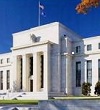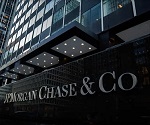
By Pam Martens and Russ Martens: August 14, 2024 ~ It is now one of the unspoken but immutable dictates on Wall Street: with each new banking crisis, the Federal Reserve will quickly create an emergency bailout program and give it a three to four letter abbreviation so that it vanishes into an alphabet soup blur of Fed bailout programs that preceded it. The latest iteration came in the spring of 2023 in response to a run on federally-insured banks that federal regulators had allowed to get in bed with crypto and/or had allowed to binge on uninsured deposits. The Fed quickly launched the Bank Term Funding Program (BTFP) on March 12, 2023. BTFP joined the copious iterations from the Fed’s COVID-19 related bailouts and the Fed’s 2007-2010 bailouts with names like the Primary Dealer Credit Facility (PDCF), Commercial Paper Funding Facility (CPFF), Money Market Mutual Fund Liquidity Facility (MMLF), Term … Continue reading










